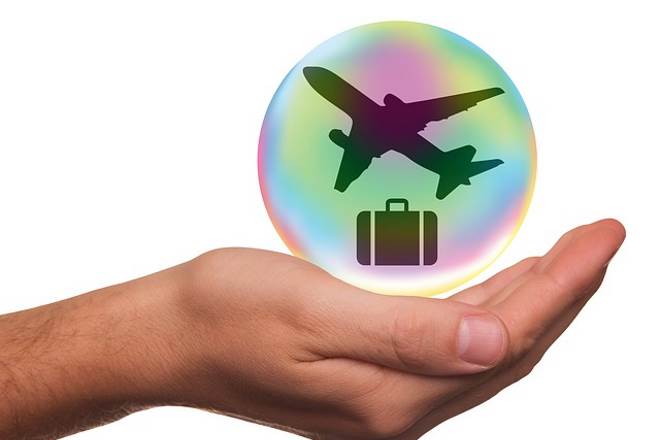Travel Insurance Demystified: Complete Coverage Guide
Travel insurance protects your finances and peace of mind when trips go wrong—medical emergencies abroad, lost luggage, trip cancellations, or evacuation. This in-depth guide breaks down policy types, pricing drivers, when to buy coverage, step-by-step claim tips, and a comparison of well-known providers to help you pick the right plan for your journey.

Types of travel insurance policies
Travel insurance is available in several formats to address different travel styles and risks. Single-trip (or single-journey) policies cover one specific itinerary from departure until return, which makes them a straightforward option for one-off holidays. Annual or multi-trip plans provide protection for multiple journeys over a 12-month period and are usually more economical for frequent travelers than buying separate single-trip policies each time.
Business travel insurance is designed for work-related trips and often includes protections such as coverage for business equipment, missed appointments, and employer-specific requirements. If your trip involves risky activities that standard policies omit, look for adventure or extreme-sports add-ons; these extensions can cover pursuits like skiing, scuba diving, or mountaineering. Group travel insurance lets families, friend groups, or organizations insure several people under one contract, simplifying administration and sometimes lowering the per-person cost.
How travel insurance pricing works
As a general benchmark, premiums are commonly in the range of 4% to 10% of the total trip cost, but the actual rate you pay varies based on several factors:
- Trip cost and duration: More expensive or longer trips increase potential financial loss, so premiums rise accordingly.
- Destination: Countries with high medical expenses or elevated security risks usually attract higher premiums.
- Traveler age: Older travelers typically pay more because the likelihood of medical claims is greater.
- Coverage limits and optional benefits: Policies with higher medical limits, generous cancellation protection, or extra coverages such as rental-car damage or electronics protection will cost more.
- Pre-existing medical conditions: Insurers may exclude certain conditions or charge extra unless you secure a waiver by buying within a specified timeframe after your initial trip payment.
Choosing a comprehensive plan with broad protections will naturally cost more than a budget policy that only covers the basics. When comparing prices, pay attention to named exclusions, sub-limits (for things like electronics, baggage, or evacuation), and any waiting periods that could affect your coverage.
Popular providers and sample plan features
| Provider | Typical Basic Plan Cost | Key Coverage Features |
|---|---|---|
| Allianz | 5–7% of trip cost | Emergency medical, trip cancellation, baggage protection |
| World Nomads | 6–8% of trip cost | Coverage for many adventure activities, electronics protection |
| AIG Travel Guard | 4–8% of trip cost | 24/7 emergency assistance, trip delay benefits |
| Generali | 5–9% of trip cost | Options for “cancel for any reason” upgrades |
Prices, rates, or cost estimates mentioned in this article are based on the latest available information but may change over time. Independent research is advised before making financial decisions.
When to buy travel insurance
To get the broadest protection and access to time-sensitive benefits, buy travel insurance as soon as you make your first non-refundable payment for the trip. Many insurers require you to purchase within a limited window—typically 14 to 21 days after your initial deposit—to qualify for waivers that cover pre-existing medical conditions or to be eligible for “cancel for any reason” (CFAR) upgrades.
If you miss that early-purchase window, you can usually still obtain basic coverage up until the day before departure. However, certain enhanced protections and waivers tied to timing will likely no longer be available. Buying early also starts coverage for problems that can occur before you leave, such as supplier insolvency or other disruptions.
How to file a travel insurance claim successfully
A timely, well-documented claim is far more likely to be processed quickly and paid. Follow these steps when something goes wrong:
- Notify your insurer immediately. Most companies operate a 24/7 emergency line and offer online claim portals or mobile apps.
- Keep receipts for any outlays you incur—medical bills, replacement items, temporary lodging, or extra transportation—and save originals when possible.
- Obtain supporting official records: police reports for theft, accident reports for vehicle incidents, and written confirmations from airlines or tour operators for delays and cancellations.
- For medical claims, collect clinical records and obtain a detailed letter from treating physicians describing diagnoses and treatment provided.
- Preserve all correspondence connected to the incident, including emails, booking confirmations, tickets, and supplier invoices.
Submit your claim via the insurer’s preferred channel, attach complete documentation, and respond promptly to follow-up requests to avoid delays or denials.
Final considerations
Travel insurance can substantially reduce your financial exposure and provide access to emergency assistance while you are away from home. For costly international trips, journeys that could require medical evacuation, or plans that include high-risk activities, purchasing adequate coverage often proves worth the premium. Always read the policy wording carefully to understand exclusions, sub-limits, waiting periods, and any conditions tied to pre-existing medical issues. Compare multiple insurers, check the fine print, and tailor the policy to your itinerary and personal needs to secure the best mix of protection and value for your next trip.






